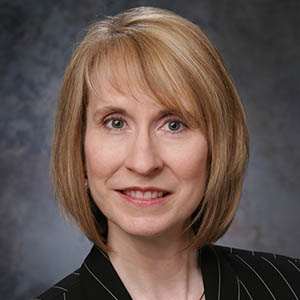Combating economic trends, regulators and even demographics, funds are forced to think outside the box.

Members of the $20-billion club, which represents about 40% of the pension assets and liabilities of all publicly traded US companies:
|
Pension funds across the globe, confronting an ever-expanding array of challenges, are increasingly embracing alternative investments, de-risking and other strategies to keep corporate balance sheets in the black. Gone are the days when plans of all stripes reaped easy returns from high-interest mutual funds and reliable stock market rallies.

The industry is grappling with tenaciously low interest rates, volatile bond and equity markets and, most recently, wild exchange rate fluctuations. In the US, regulatory pressure has amped up, along with premiums levied by the Pension Benefit Guaranty Corporation and challenges from corporate auditors over sums set aside for pension liabilities. Managers of defined-benefit (DB) pension plans must also reckon on longer lifespans for retirees, just recalculated by the Society of Actuaries, which inflated 2014 pension liabilities by an estimated $29 billion at 17 big US companies that adopted them, according to Russell Investments.
The 17 companies belong to the global asset manager’s so-called $20 billion club of 19 multinationals with DB liabilities exceeding their namesake figure (see table, opposite). Their combined pension deficit of $114 billion at the start of 2014—the lowest since 2007, according to Russell—surged to $183 billion as a result of the new longevity numbers and lower interest rates.
“It’s challenging to find returns. There’s no obvious way,” says Bob Collie, chief research strategist, Americas institutional, at Russell Investments in Seattle, Wash.
Increased longevity pressures plan sponsors to churn out additional returns for their employees. And sponsors in some European countries also contend with built-in cost-of-living increases that can accompany pension payouts. That said, managers of defined-benefit plans in Europe have been adjusting to revised mortality tables for some time after starting to freeze accruals to the plans about 10 years ago—nearly a decade after the shift to defined-contribution plans first began.
It’s challenging to find returns. There’s no obvious way.
~ Bob Collie, Russell Investments
Jim McHale, a principal at PwC in New York, said defined-benefit plans are generally not part of the pension landscape in Asia, save in Japan, where there are many cash-balance or pension-equity-type plans.
The bane for Europe’s pension plans continues to be the steep decline in both interest rates and long-term bond yields. “Bank deposit rates in Switzerland and 10-year bond yields in Germany are negative, (which) has caused liabilities for typical plans to increase by 25% to 30% in calendar 2014 alone,” says Tim Reay, director, global pensions, at PwC in London. “Unless they operate a matching-asset strategy, this will have had a significant impact.”
In response, Russell Investment’s Collie says some defined-benefit plans are diversifying, while others accept lower returns and follow more conservative approaches. “There is no longer one approach. Pension plan managers are not just following the herd,” he says.
Some experts see corporate financial executives increasingly seeking to eliminate the risk of defined-benefit plans by transferring plan liabilities to insurance companies through mechanisms such as annuities.
“The confluence of events is leading to more and more plan sponsors moving to mitigate their risk,” says Wayne Daniel, senior vice president, US pensions, for MetLife. “The risk was always there, but it has been under-recognized. Now companies are fully understanding it and want to pass it on to an insurer, who is used to managing (it).”
Transferring risk to an insurance company saves chief financial officers a big headache. “They can focus on making widgets … not focus on managing their pension liability risks,” Daniel says.
David Petu, managing director, Financial Institutions, Fitch Ratings in New York, says the process of going off balance sheet is highly complicated and not taken lightly by corporate financial officers. “It takes a lot of planning. To close it out, you have to have all the employees on board. There are a lot of moving parts.”

Managers have also been seeking out alternative investments such as hedge funds, exchange-traded funds and real assets—in particular, real estate and financing infrastructure projects like roads, bridges and airports—that can produce revenue streams, says Barbara McKenzie, chief operating officer of Principal Global Investors in Des Moines, Iowa. She notes that commodities have become less popular as their prices have headed downward.
“We aren’t seeing much in the way of alternative strategies as stand-alone options in 401(k)s, but these are finding their way into target-date and target-risk funds,” says McKenzie, referring to a hybrid mutual fund that automatically resets the mix of assets in its portfolio over a selected time frame appropriate for a particular investor—usually retirement. Target-date funds came into vogue in the 1990s and are being offered more frequently now. The funds, while sometimes criticized for a one-size-fits-all approach, are easy ways for people to put their retirement investing activities on autopilot with the funds recalibrated as the plan participant ages. They also curb investors’ tendency to shift investments when stock markets plunge or bond yields decline.
PwC’s Reay cites the drop in long-term bond yields as the single factor with the greatest impact on pension plans everywhere. In response, investment managers are following liability-driven strategies, using hedging and derivatives to reduce volatility and capture additional returns from investing in equities as they reduce exposure to swings in interest rates.
He also notes that vehicles called longevity swaps, to offset exposure to longer lifespans, are being used in the UK and eyed with interest in continental Europe.
As global economies head into summer, whether in Europe, Asia or the United States—analysts say currency risks are center stage.
Rates “are moving all over the place,” says McKenzie, which makes it tremendously difficult for investment professionals to pinpoint just when to enter emerging markets and when to sell. “There is a lot of angst,” he says.



